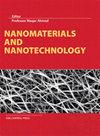阴离子对细胞繁殖过程中动态生成的生物施特曼石纳米结构和形态的影响
IF 3.3
3区 材料科学
Q2 MATERIALS SCIENCE, MULTIDISCIPLINARY
引用次数: 2
摘要
Schwertmannite被认为是水体污染物的宿主矿物和潜在的优秀吸附剂,它具有各种形态的球状体,有枕状物、须状物、刺猬状物和针状物。在这项工作中,我们使用(高分辨率透射和场发射扫描)电子显微镜,研究了在富含细胞的铁溶液中产生的schwertmannite的纳米结构、形态演变和化学成分的差异。所有分析结果表明,在细胞36小时的繁殖期内,在Cl−/SO4 2−摩尔比为0–10、pH为3.0±0.1的铁溶液中,仅检测到施氏芒硝的产生。schwertmannite纳米结构的两种典型形态“枕状物”(Cl−/SO4 2−=0和3)和“刺猬”(Cl–/SO4 2–=6和10)存在差异。所有最终的schwertmannite颗粒的化学式为Fe8O8(OH)8−2x(SO4)x(1.08≤x≤1.66),特别是当Cl−/SO4 2−=0时,可见的“枕状物”仅是存在于紧密球形schwertmanite组合中的整个针状物的最外层。此外,在这些针的纳米尺寸中确定了不存在水铁矿和针铁矿,尽管初始Fe和SO4 2−分别为5600和9600µg/mL。它可能是由与细胞活性和矿物沉淀相关的水性Fe、SO4 2−和Cl−的量和活性引起的。这项研究将有助于了解氢氧化铁纳米结构的实际存在,更好地开发其潜在的环境应用。本文章由计算机程序翻译,如有差异,请以英文原文为准。
Anionic effect on nanostructure and morphology of bio-schwertmannite dynamically produced within cellular reproduction
Schwertmannite has been considered as the host mineral and potentially excellent adsorbent of contaminates from waters, and it has various morphologies of spheroid with pincushions, whiskers, hedge-hogs, and needles. In this work, using the (high-resolution transmission and field-emission scanning) electron microscopes, we studied nanostructure, morphological evolution, and difference in chemical composition for the produced schwertmannites in the cell-rich iron solutions. All analysis results showed within cellular 36-h reproduction period, the production of only schwertmannite was examined in iron solutions at the Cl−/SO4 2− molar ratios of 0–10 and pH 3.0 ± 0.1. There were differences in two typical morphologies of “pincushions” (Cl−/SO4 2− = 0 and 3) and “hedge-hogs” (Cl−/SO4 2− = 6 and 10) for the schwertmannite nanostructures. And all final schwertmannite particles had the chemical formulas of Fe8O8(OH)8−2x (SO4) x (1.08 ≤ x ≤ 1.66), especially as Cl−/SO4 2− = 0, the visible “pincushions” only being the outermost sections of the whole needles existing in a tightly spherical assemblage of schwertmannite. Moreover, the absence of ferrihydrite and goethite was determined in the nanodimension of these needles, though the initial Fe and SO4 2− were 5600 and of 9600 µg/mL, respectively. It could be induced by the amounts and activities of aqueous Fe, SO4 2−, and Cl− associated with cellular activities and mineral precipitation. This study will be useful for understanding the actual occurrence of iron oxyhydroxide nanostructure and better developing its potential environmental application.
求助全文
通过发布文献求助,成功后即可免费获取论文全文。
去求助
来源期刊

Nanomaterials and Nanotechnology
NANOSCIENCE & NANOTECHNOLOGY-MATERIALS SCIENCE, MULTIDISCIPLINARY
CiteScore
7.20
自引率
21.60%
发文量
13
审稿时长
15 weeks
期刊介绍:
Nanomaterials and Nanotechnology is a JCR ranked, peer-reviewed open access journal addressed to a cross-disciplinary readership including scientists, researchers and professionals in both academia and industry with an interest in nanoscience and nanotechnology. The scope comprises (but is not limited to) the fundamental aspects and applications of nanoscience and nanotechnology
 求助内容:
求助内容: 应助结果提醒方式:
应助结果提醒方式:


